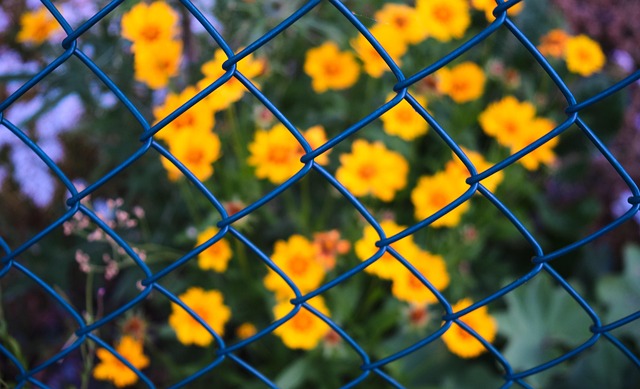In coastal regions, where harsh conditions and corrosive saltwater pose unique challenges, durable wooden fencing is an attractive and sustainable solution. This article explores the comprehensive guide to installing and maintaining robust wood fences designed to withstand the rigors of the coastline. We delve into understanding specific requirements, highlighting the advantages of natural barriers against wind and waves, and offering expert advice on selecting suitable wood species, treating materials, and installation best practices for long-lasting coastal protection.
- Understanding Coastal Fence Requirements
- Advantages of Wooden Fencing in Coastlines
- Choosing Durable Wood Species for Coastline Fences
- Effective Treatment Methods for Coastal Wood
- Installation Tips for Longevity in Saltwater Environments
- Maintenance Strategies for Lasting coastal fences
Understanding Coastal Fence Requirements
In coastal areas, where harsh weather conditions and salty air can take a toll on materials, understanding the specific requirements for fencing is essential. Durable wooden fences must withstand not only strong winds and storm surges but also the corrosive effects of salt water. The choice of wood species plays a crucial role; tropical hardwoods like teak or cedar are popular due to their natural resistance to decay and insects.
Additionally, proper treatment methods such as pressure-treating with chemicals or using naturally rot-resistant woods are necessary to ensure longevity. Coastal fences also require robust installation techniques, including deep anchors and strong posts set in concrete to resist the forces of nature. These measures contribute to the overall durability and safety of the fence, ensuring it can withstand the unique challenges presented by coastal environments for many years.
Advantages of Wooden Fencing in Coastlines
Wooden fencing offers numerous advantages when it comes to coastal areas. One of its key strengths is aesthetics; natural wood provides a beautiful, timeless look that complements the surrounding environment. Its organic appeal enhances the landscape, creating a harmonious blend with the sea and beachfront homes. Moreover, wood has excellent weather resistance, making it an ideal choice for coastal climates where it can withstand salty, humid air without significant deterioration.
Another advantage is cost-effectiveness. Compared to other materials like metal or vinyl, wooden fencing is more affordable while still providing robust protection. It’s easy to install and maintain, requiring simple cleaning and occasional repairs. This makes it a practical option for homeowners looking to secure their properties along the coast without breaking the bank.
Choosing Durable Wood Species for Coastline Fences
When selecting wood for coastal fencing, understanding durability is key. Not all woods are created equal when faced with salt air, moisture, and frequent exposure to harsh weather conditions. Certain tree species are naturally more resistant to rot, insect infestation, and environmental stress, making them ideal choices for seaside installations. For example, cedar and redwood are renowned for their exceptional longevity in coastal settings due to high levels of natural oils that repel water and inhibit decay.
Considered game-changers for outdoor projects, these hardy woods offer not just durability but also a beautiful, natural aesthetic. They can withstand the constant battering of wind and waves, ensuring your fence remains robust and visually appealing for years to come. Their resilience is well-documented, making them a popular choice among professionals and homeowners alike looking to invest in long-lasting coastal fencing solutions.
Effective Treatment Methods for Coastal Wood
The harsh coastal environment, with its salty air, frequent rainfall, and potential exposure to extreme weather events, presents unique challenges when it comes to choosing fencing materials. Wooden fences, in particular, require specialized care to withstand these conditions and maintain their durability. Treating wood before installation is a proactive step that significantly extends its lifespan near the coast. Effective treatment methods include applying water-repellent coatings or stains that not only protect against moisture but also help to prevent the absorption of salt, a common enemy in coastal regions.
One popular option is to use pressure-treated lumber, which has been soaked in preservatives, making it resistant to rot and insect damage. This type of wood is an excellent choice for coastal fencing as it can endure high humidity levels. Additionally, applying a thick layer of sealant or varnish after installation can create a protective barrier against the elements. These treatments, when combined, ensure that wooden fences remain sturdy, visually appealing, and long-lasting in challenging coastal settings.
Installation Tips for Longevity in Saltwater Environments
When installing wooden fencing in coastal areas, especially where saltwater is prevalent, there are several key tips to ensure longevity. First, choose a wood species designed for durability in such environments, like cedar or treated pine. These woods have natural resistance to rot and decay caused by salt water. Ensure proper drainage around the fence line to prevent water buildup, which can accelerate deterioration.
Another critical step is to properly prepare the posts and base of the fence. Concrete foundations should be deep enough to avoid excessive moisture contact. Use stainless steel hardware instead of regular bolts and nails to prevent corrosion. Regular cleaning and sealing of the fence will also extend its lifespan, removing salt buildup and protecting the wood from harsh coastal conditions.
Maintenance Strategies for Lasting coastal fences
Maintaining durable wooden fencing in coastal areas requires strategic strategies to safeguard against corrosive salt air, consistent moisture, and potential extreme weather events. A key first step is regular cleaning with mild soap and water to remove salty residue and dirt buildup, preventing impurities from seeping into the wood. Applying a fresh coat of high-quality, marine-grade sealant every 1-2 years acts as a protective barrier against moisture and UV radiation, extending the fence’s lifespan significantly.
Additionally, ensuring proper drainage around the fence is paramount. Installing a small slope or gradient away from the structure helps prevent water accumulation, which can lead to rot and deterioration. Regular inspection for signs of damage, such as warping, splitting, or mold growth, is crucial. Promptly addressing these issues with appropriate repairs or replacement components can mitigate major structural problems in the long term.
